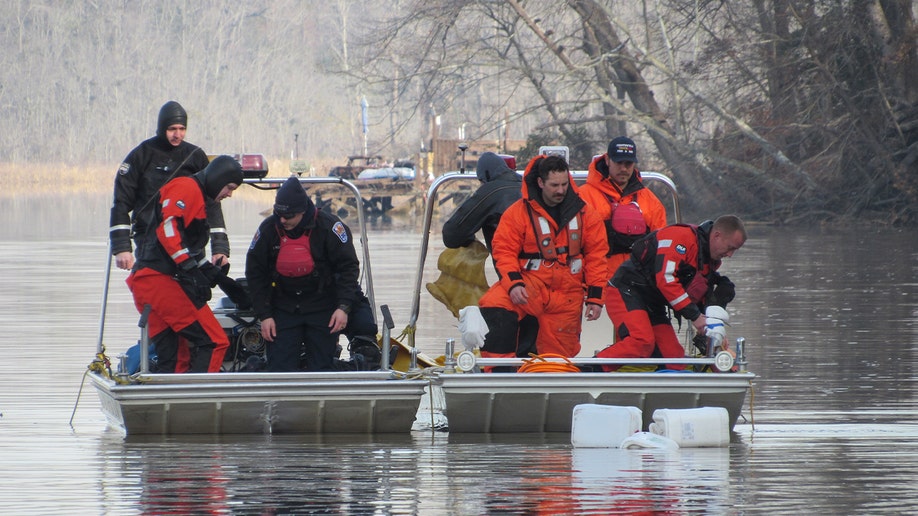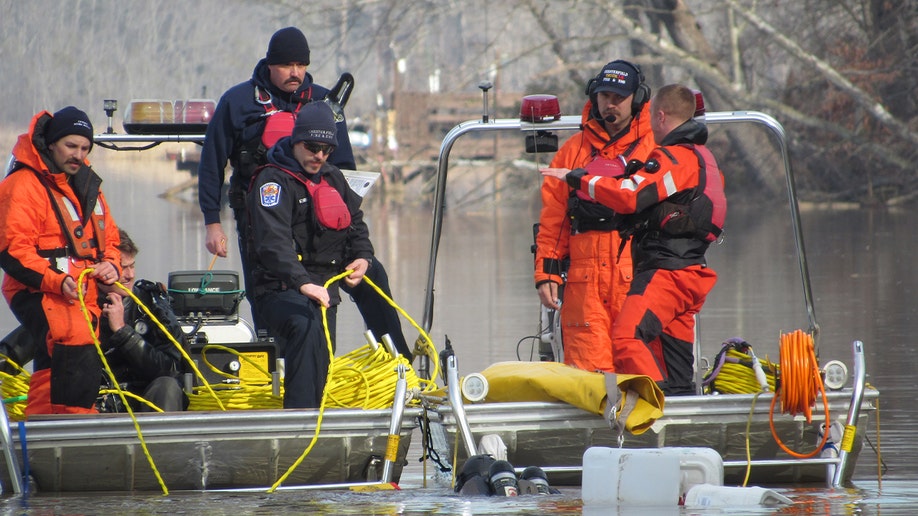DC plane crash: Potomac River divers’ search for bodies complicated by conditions out of their control
As recovery efforts on the Potomac River continue after a midair collision between an Army helicopter and an American Airlines plane on Wednesday night, a Virginia rescue diver and firefighter shed light on the challenges divers may be facing in the frigid waters.
A total of 64 people, including passengers and flight crew members, were aboard AA Flight 5342 from Wichita to Reagan National Airport (DCA). Three soldiers were conducting a training operation on the Army Sikorsky UH-60 Black Hawk that came from Fort Belvoir in Virginia.
All 67 people onboard both aircraft are presumed dead. As of Friday afternoon, authorities said they had recovered 41 sets of remains and identified 28 of those victims.
“This is incredibly unusual. You know, we’re trained and always ready to answer the call…when the dive call comes in. But that’s typically involving one victim. And in rare occasions, a couple of victims,” Jake Crockett, a firefighter and diver with the Scuba Rescue Team of Chesterfield Fire & EMS, told Fox News Digital.
HARROWING VIDEO FROM MILITARY BASE SHOWS NEW ANGLE OF MIDAIR CRASH CATASTROPHE

“But something of this magnitude, you know, having 67 people to account for, along with two aircraft and all the debris is just it’s incredibly out of the ordinary. It’s something that, no doubt, none of them nor myself could have predicted.”
Crockett believes the recovery mission could last weeks, yet he is hopeful that all the victims will be accounted for in the next several days.
VICTIMS IDENTIFIED IN DC PLANE CRASH INVOLVING AMERICAN AIRLINES JET AND MILITARY HELICOPTER
“Obviously, they’re making really good progress in a short amount of time. But I’m sure that recovery of the victims should be the number one priority… providing closure to these families that have lost their loved ones should be the most important thing,” Crockett said.
“Once that is completed, then recovering the two aircraft and then also finding as much of the debris from the collision that they can in the river,” he added. “That is what is probably going to take the longest…they’re going to be looking for every single piece, every nut and bolt that they possibly can for the investigation.”
HAUNTING FINAL SOCIAL MEDIA POST FROM ‘ICE SKATING SISTERS’ EMERGES AS TRIBUTES POUR IN

Crockett said divers are likely to face a multitude of challenges in the Potomac River, with the largest being water visibility.
“It’s going to be zero visibility or close to zero is that they’ll be diving in, and so looking for small parts of an aircraft in that kind of visibility is going to be extremely challenging…the waters here and the lakes and ponds and rivers…when you go in, it’s just dark,” he said. “You rely 100% on touch and in your training, you fall back on your training of doing accurate search patterns, so that you don’t miss anything. You’re just touching everything that you can get your hands on and feeling it and trying to identify it.”
Without the ability to see in such a large body of water, Crockett explained that certain technology like sonar can help divers detect large objects underwater but added that there are limitations involved.
“At the end of the day, all the technology, it just gives you somewhere to look,” he said. “Someone will have to go down there to still recover, to still verify that this is something related.”
Crockett noted that the river’s temperature may also be an obstacle for divers during the recovery mission.
“The water temperature especially is just above freezing, which is, you know, it would be absolutely unbearable to jump in without, you know, without the appropriate diving suits,” he said. “Even with appropriate PPE, you can only stay in that water for so long before you start to lose dexterity in your hands, which would impact your searching.”
SAFETY OFFICIAL SHARES DETAILS ON INVESTIGATION, BOMBSHELL STAFFING REPORT

Image 2 of 2
Crockett said there’s “no telling” how far remains from the wreckage may reach.
“The Potomac is, is massive, you know, from where they are, it goes hundreds of miles all the way out to the Chesapeake Bay,” he said. “It’s a river, so it has a current…that’s another factor for the divers getting in.”
Crockett explained that the river’s current may be a significant factor for several reasons, including divers needing to fight the current and feeling “fatigue” as a result, and the flow of water potentially moving around victims’ remains and wreckage debris.
“They’ve got a really big job ahead of them, which is why I think this is going to be weeks-long, because in order to be thorough, they’re going to be up and down that river for miles looking,” he said.
TIMELINE: PLANE AND HELICOPTER IN DEADLY MIDAIR COLLISION

What originally began as a search and rescue effort Wednesday turned to a recovery mission once officials believed there were no survivors.
“Once it’s turned over to a recovery mission…our goal is to provide that closure,” Crockett said, adding that the victims’ families “need to be able to properly bury their loved one and grieve and mourn in an appropriate way.”
CLICK HERE TO GET THE FOX NEWS APP
Crockett added that if his team were called upon to aid in the recovery efforts, they would be prepared for the challenge.
“The first responder family is massive and everyone’s always willing,” he said.
Fox News’ Audrey Conklin and Greg Norman contributed to this report.

